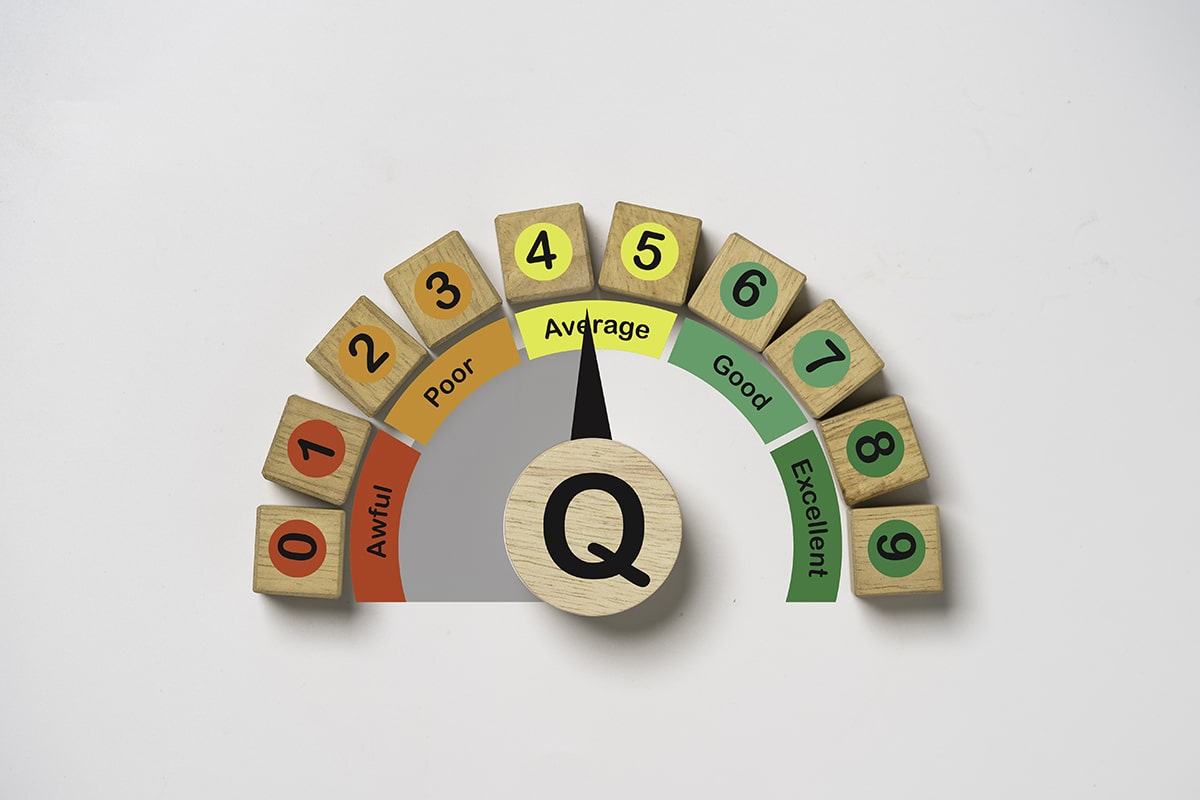Conducting surveys and evaluating responses is a great way to improve your company. However, it’s impossible to know the number of responses you’ll get from these surveys.
The reality is that sometimes, your surveys’ average response rate may be low. Sending out the survey is only one step, but the problem is getting your customers to respond.
But why does this happen? Here are some common reasons:
- You did not add an incentive
- The survey is not personalized
- Your survey is too long
Low online survey response rates can be frustrating for your company – but not to worry, as some of the best businesses have experienced it too.
To help you with this problem and increase your survey response rate, we’ve compiled 10 strategies to help you out.
Collect feedback with JustFeedback
JustFeedback helps your business increase profits and reduce risk by improving your customer experience
1. Personalize your survey template
Today, clients are more responsive when a brand knows them on a deeper level and provides personalized services and experiences.
This means as a business, you’ll need to personalize all your communications with clients down to customer satisfaction surveys.
So, how do you go about this for good survey response rates? Below are some of the best options:
a. Brand your survey
Every survey you send should align with the image of your brand. While this may seem unnecessary to you, it is very important to your customers so they don’t assume your survey is spam and ignore it – leaving you with a low survey response rate.
What’s more, internet based surveys are a representation of your company and must sound and look like your brand.
This way, customers will get a consistent experience whenever they communicate with you. To brand your survey, you’ll want to include your business logo and use the same colors as your brand. It should also use the same concept as your ads and products to add a feel of legitimacy.
b. Use interesting survey subject lines
If you send an email survey to your customers, not all of them will open it. What’s more, only a fraction of those that eventually open it will take the time to complete it and get you adequate survey responses.
While this may be demoralizing, it’s something you need to expect when dealing with clients. To improve your conversation rate, you’ll need a good survey response rate.
So, how do you go about this?
Try out different subject lines until you find an interesting one. For instance, instead of the generic “Complete our Survey,” you could go for something more interesting like “Did you like our product? Tell us how we can make it better.”
This will help you stand out from the tons of emails your customers may receive daily.
Note that finding the right subject line isn’t easy. You’ll want to try out different ones until you find the ideal option. As a rule of thumb, go for a subject line that is personal and interesting while clearly stating what the content is about.
With this, you can be sure that a higher percentage of customers who open your survey are interested in what you offer which means better average survey response rates.
c. Use the customer’s name
Another great way to make surveys personal is to address it in their name.
To take things further, you can enter other personal information like email address or phone number that you have in store.
Entering this information in the email subject or body while addressing your customers by name will make them feel valued. Ultimately, it can improve your online survey response rates and get you the feedback you need.
d. Use your customer’s native language
Not all your clients will be English speakers. This is why sending your transactional surveys in their native languages can go a long way.
Since your objective is to increase your survey response rate, you’ll want to ensure that everyone filling in the surveys understands them.
If you stick to one language, especially when you run an international business, you won’t get the needed survey responses.

2. Make your surveys easy to complete
If your survey has successfully been delivered into the inbox of your customers, the next step is to ensure that they complete it with ease.
The tips below can help you achieve this:
a. Make your surveys fun
Do you remember how much fun you had the last time you spent hours playing video games? What if you could incorporate this feeling into your surveys, ensuring customers will be unable to drop them until they’re done thus improving your survey responses?
This is where gamification comes in. It involves the inclusion of game principles into non-gaming scenarios with the goal of increasing motivation and user engagement.
There are different ways to improve your survey response rates using gamification, including:
- Adding a slot machine for higher response rates
- Transforming your online survey into a competition
- Including rewards and badges for potential respondents
- Change your online survey into a quiz for better response quality
b. Boost user experience
If your customers manage to open your online survey and they find it too hard to complete, they’ll abandon it. For more completed surveys, ensure they are user-friendly and straightforward design to ensure potential respondents complete them.
You’ll want to make sure that it is easy to navigate and that the survey length is reasonable. Questions shouldn’t be too many but clear and easy to answer, or you won’t get a good survey response rate.
Moreover, ensure your survey works flawlessly on every type of device ranging from smartphones to desktops. This is important since you can’t determine which device a respondent will use in accessing your customer feedback surveys.
Your goal should be to make sure that customers can fill your surveys from any location and device without problems.
With this, you can be sure of an acceptable survey response rate from your customers.
c. Don’t end up in the spam folder
If your online survey makes its way into the spam folder of respondents, you’ll be reducing your survey response rate. Not many people check their spam folders and those who do will probably refuse to open any emails.
Unfortunately, there is no direct way of ensuring the surveys you send out do not end as spam. Spam filtering services don’t offer information on how to stay away from the spam folder – to avoid spammers taking advantage.
However, there are some general tips that can help you avoid the spam folder and get a higher survey completion rate, including:
- Use a well-known domain or email address that the client has already marked as trusted when sending survey questions.
- Have an existing email relationship with the customer before you send out a survey invitation. This will minimize your chances of ending up in the spam list.
d. Avoid using too many images
If you are sending your survey invite as an HTML document, aim to restrict the use of images. Most email clients don’t allow images to download automatically. This means if you use images in vital areas of your survey, it will reduce the survey response rate.
Not many customers will have the patience to individually download images and may abandon your survey entirely.
If it’s not important, avoid adding images to your survey and watch your survey completion rate rise.
3. Don’t spam your customers
Getting feedback through external surveys is important. However, like every great thing, doing it in excess can have the opposite effect.
Make sure you don’t bombard customers with survey invites as this could lead to a drop in your survey response rate. While there is no specific rule that guides how you do this, ensure you space out your survey invites if you want an acceptable response rate.
If your customer is a regular user of your service, then sending the survey once every month is ideal. But for customers who rarely use your service, sending a survey invite once every year might be your best bet for a good survey response rate.
Note that this is only a guide and not one you necessarily must follow for more completed survey responses. Simply make sure you don’t bombard clients and force them to blacklist your email.
4. Use multiple communication channels
Emails are the most preferred survey distribution channel for many companies. However, there are many survey distribution methods and you don’t have to limit yourself to emails.
Instead, you must analyze your clients and determine the distribution channel they use more. For instance, if you communicate with your customers through WhatsApp, you’ll want to share the survey link there.
If you use mail communications, send your survey invites here for better mail survey response rates.
You can also embed survey links on your website or carry out an in-app survey if your company has an app.
The channel you use for your surveys can influence your online survey responses. Better still, you can combine numerous channels to boost your survey response rates.

5. Offer incentives to encourage participation
Nothing works better than using incentives to encourage respondents to complete online surveys. While your company’s reputation may be good enough to encourage a few participants, others may not feel the same way.
Luring your target audience with survey incentives like discounts, cash prizes, and gift cards can significantly boost your survey response rate. You don’t have to go overboard with this, especially if you don’t have the budget.
Small but thoughtful gifts will be enough to do the trick and get you a higher survey response rate.
6. Focus on active customers
While this may seem important, companies often ignore it when conducting online surveys. Sending a survey participation link to a client who has not done business with your company for a while will most likely not get a response.
For acceptable response rates, you’ll want to focus on customers who still do business with your company. Make sure you go through your contact list and take note of those that are still active.
You can use the most recent purchase or login date as your selection criteria for survey respondents.
Active customers will understand why you are contacting them and will provide the type of feedback you need. They will get you the correct feedback since their interaction with your business is still fresh.
In contrast, inactive customers who answer surveys from you will provide old feedback based on their past experiences instead of new ones.
7. Send out reminders
Your target audience will consist of customers who have busy lives of their own. This means that it will sometimes be necessary to send out a reminder if they haven’t completed surveys within a few days.
If you do this right, you can improve your survey response rate, even if it is by a slight margin. Note that reminders should not be forceful as it might have the opposite effect and leave you with a low response rate.
For instance, lines like “We will still appreciate your feedback” or “Your opinion still counts” will do the trick and improve survey response rates.
8. Follow up on customers
If your customer completes your survey based on the reminder you sent out, don’t just stop there. Instead, follow up and let them know you appreciate their input.
Aside from making them know you value their opinions, it will also influence response rates and encourage them to keep providing feedback when you want.

9. Act on the feedback quickly
After getting the results from your survey questions, don’t stop there. Instead, share your results with the survey respondents and act on them.
Sharing the results with customers makes them feel in the loop and will encourage them to partake in subsequent surveys. Try to include statistics and numbers where you can but don’t compromise the privacy of your customers.
Also, calculate your average response rate to see the outcome and if you are targeting the right customers. Finally, don’t ignore the feedback you get from your surveys.
Ensure you act on the problem areas, which will help improve your company and boost its overall growth.
10. Show appreciation to customers
Sending a message with a simple “Thank You” to reassure respondents after they complete a survey is vital. This will make them look forward to completing your survey the next time it comes which means better survey response rates.
If you prefer, you can go beyond the typical “Thank You” and use great lines like:
- We appreciate your help!
- Thanks for helping us out; we’ll surely make your experience better!
- Thank you for taking the time to complete this survey; you are Amazing!
Completing a survey requires time and effort, and expressing gratitude will make them feel valued.
Conclusion
The right survey design is important for collecting and analyzing data that you can use to improve your business.
What’s more, a properly designed survey will increase your survey response rates, ensuring your analysis is more accurate. With an increased number of responses, you better understand your target clients and data trends.
Remember to incorporate the tips we have provided for the best outcome.
Combining two or more of them while sending out your surveys can positively influence your survey response rate.
